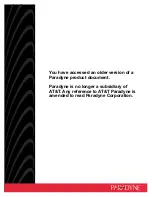
15
CAUTION:
The router supports only transceiver modules that can operate at a temperature of –40°C to +85°C
(–40°F to +185°F).
CAUTION:
•
Make sure the bend radius of the fiber is not less than 10 cm (3.94 in).
•
Make sure the end faces of the fiber connectors are clean.
•
Insert a dust plug into any open fiber port to protect them from contamination.
To connect an Ethernet optical fiber:
1.
Remove the dust plug from the Ethernet fiber port.
2.
Identify the upside and downside of the transceiver module and then insert the transceiver
module into the fiber port.
3.
Identify the Rx and Tx ports on the transceiver module. Use the optical fiber to connect the Rx
port and Tx port on the transceiver module to the Tx port and Rx port on the peer end,
respectively.
4.
Examine the port LED on the router. For more information about the LEDs, see "
."
Figure 16 Connecting an Ethernet optical fiber
Connecting the console cable and setting terminal
parameters
To access the router for the first time, use a console cable to connect the console port on the router.
Connecting the console cable
CAUTION:
The serial ports on PCs do not support hot swapping. To connect a PC to an operating router, first
connect the PC end. To disconnect a PC from an operating router, first disconnect the router end.
To connect the console cable:
1.
Select a configuration terminal, which can be an ASCII terminal with an RS232 serial port or a
PC. (A PC is more commonly used.)












































